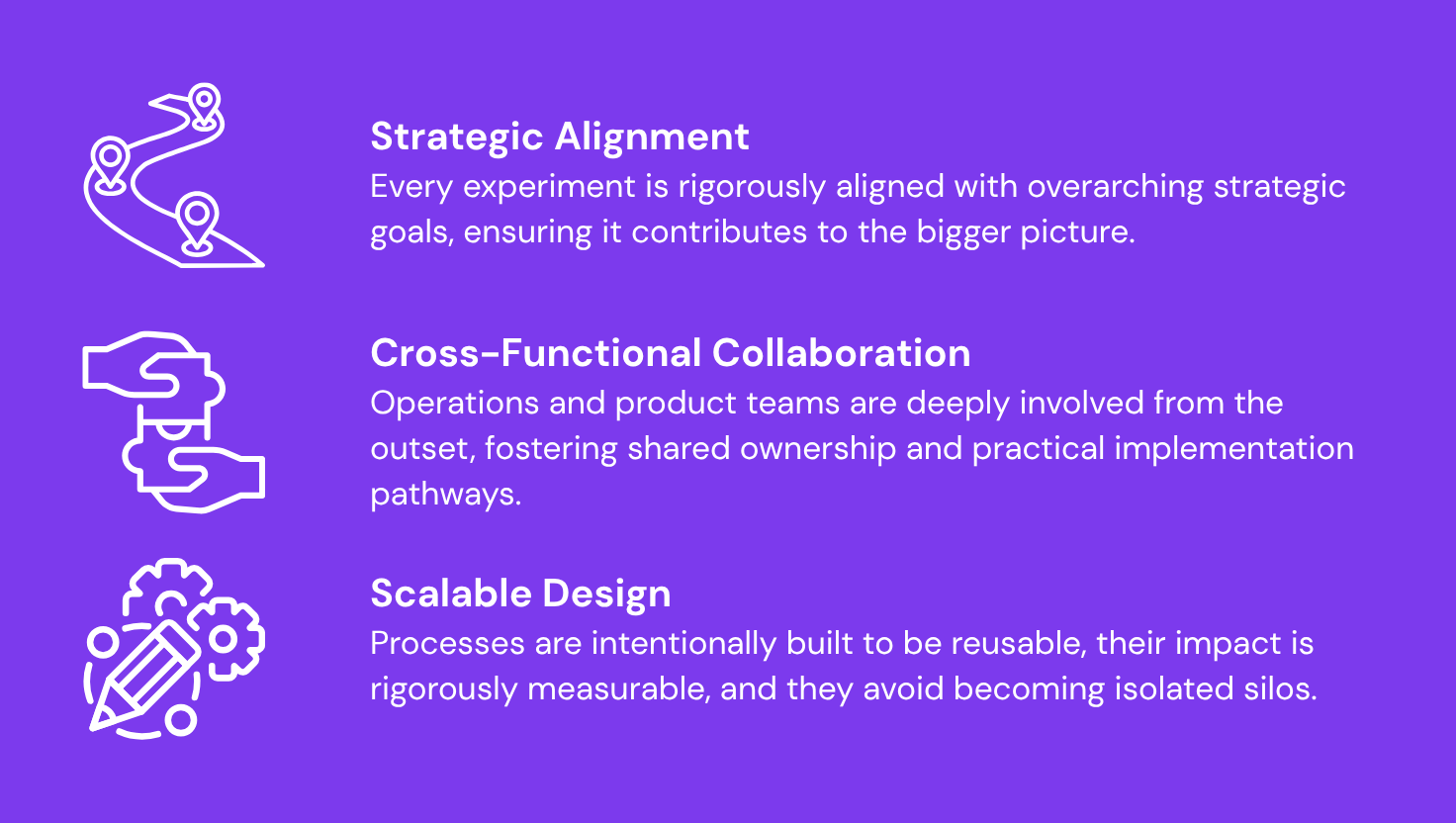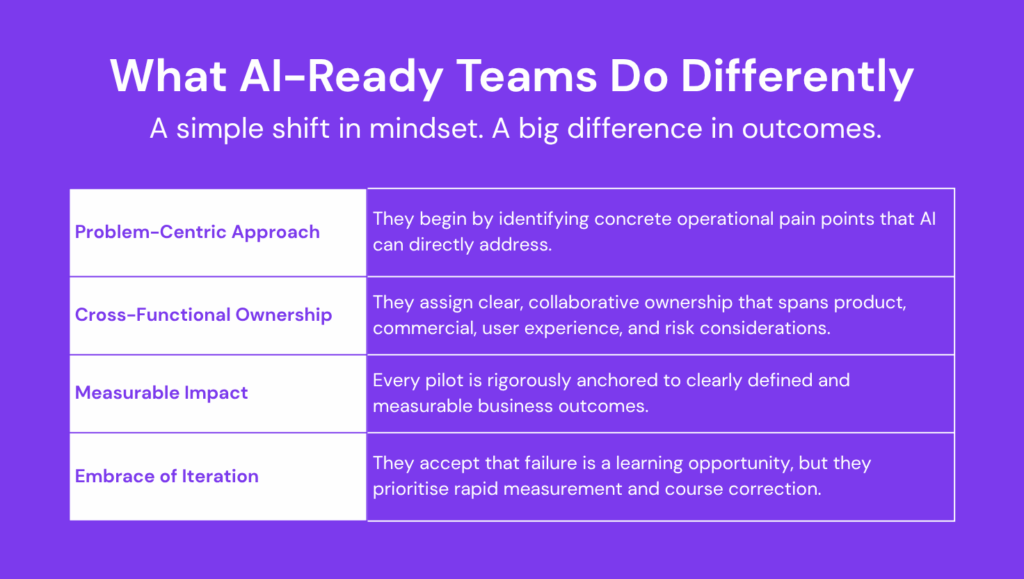In the high-stakes race to embrace Artificial Intelligence, many publishers are still tripped up by a fundamental misunderstanding. They’re asking the wrong question.
Too many publishers are still using AI to optimise yesterday’s ad models, the real revenue growth will come from hyper-personalisation, intent-adaptive products, dynamic pricing, and contextual content formats that respond to behavioural intention in real time.
Mark Breslin, co-founder of amplify & impact and bridged media advisor
We sat down with Mark to dissect the critical differences between publishers who successfully weave AI into their operational fabric and those who see promising initial projects wither on the vine. The core distinction? It’s not about the allure of the latest AI tools; it’s about cultivating the internal capability to act strategically and at scale.
Treating Data as a Dynamic Revenue Engine
AI holds the transformative potential to reshape how publishers deeply understand and effectively monetise their audiences – but only if they undergo a fundamental rethink of their businesses.
The real world will come from hyper-personalisation… and treating data as a monetisable asset, not just as a reporting tool.
Mark explains that behavioural intent should shape how content is delivered, how offers are surfaced, and how pricing evolves in real time. Yet many publishers still treat data as passive analytics not as fuel for deeper engagement and monetisation.
Unlocking new revenue doesn’t require more content. It requires smarter infrastructure and better data leverage.
Why Promising AI Initiatives Hit a Wall
Having worked with news organisations across the globe, Mark has observed a strikingly consistent pattern: initial excitement, a well-intentioned innovation pilot showcasing early promise… followed by a disheartening plateau.
The ones that push through are the ones that treat pilots as infrastructure and capability investments, not just experiments.
He pinpoints the key actions of these successful teams:

Where it breaks? When AI is isolated in tech or innovation teams with no organisational integration.
Recognising AI as a Catalyst for Organisational Transformation
One of the most pervasive and damaging misconceptions surrounding AI adoption, according to Mark, is the naive belief that it’s a simple, out-of-the-box solution.
Some leaders expect plug-and-play efficiency. That’s a complete misconception… AI demands up-front curiosity and thoughtful planning. AI should be considered as a strategic capability
The pace of technology change is rapid however organisations can only move as fast as their people.
The smartest boards don’t just review AI and sign things off, they become AI-literate and set the direction from the top. They walk the walk and actually use the tools inside their organisations.
It’s not about adding AI onto current workflows. It’s about building the conditions, structurally and culturally, to absorb and apply it at scale.
The Hallmarks of AI-Ready Publishers
True AI-readiness isn’t a matter of a single hire or a software purchase. It manifests in a fundamental shift in mindset and a disciplined approach to execution.
When they stop asking, ‘How can we do AI?’ and begin asking, ‘Where are our pain points?’ That’s the real signal.
He highlights the common traits of teams who successfully translate AI potential into tangible results:

Furthermore, Mark underscores the importance of an internal champion. This individual doesn’t need to be a deep AI specialist, but rather someone with a strong grasp of product strategy, commercial realities, user-centric thinking, and risk assessment. This role is vital for ensuring AI projects are strategically anchored within the business and have clear internal ownership, driving them beyond the theoretical into practical implementation.
Organisations should aim to have a top down as well as a bottom up approach, finding energetic change champions in different functions. This will help to drive forward momentum and help in providing regular feedback loops.
The Role of Leadership and Boards
The responsibility for fostering AI maturity doesn’t stop at the operational level; it extends to the very top leadership.
Every board member must become fluent in AI’s second-order effects, not just what it can do, but how it shifts power, risk, and opportunity cost.
Mark stresses that leadership can’t delegate AI literacy. They must guide organisational rewiring, not just approve pilots.
It’s not about bolting AI onto workflows. The organisation needs to be rewired to be genuinely AI-first, with skills like AI literacy, product empathy, ethical oversight, and engineering becoming part of the core.
Boards should expect a new blend of skills, internal upskilling, and a redefinition of how teams work across product, data, and editorial.
What Publishers Should Do Right Now
Mark’s advice for publishers looking to move beyond AI hype and achieve tangible results is both direct and pragmatic:
Start with the big picture. Ask where the business is going, what kind of publisher you want to be in two or three years, and then work backwards.
His framework is simple: resist the urge to chase every shiny AI experiment. Instead, rigorously tie every potential use case back to a concrete business objective.
If a use case isn’t anchored to strategy and you can’t measure it today, don’t start it.
Food for Thought
AI becomes real when it leaves the strategy slides and hits the backlog.
That single sentence encapsulates the essence of Mark’s wisdom. AI isn’t about grand pronouncements or innovation theatre; it’s about disciplined execution. When approached strategically and implemented thoughtfully, AI has the power to amplify what publishers already do best: deeply serve their audiences, build enduring trust, and drive sustainable value at scale.
Want to unlock the true potential of AI for your publishing organisation?
Schedule a call with us and see what AI can do for you are your team.


